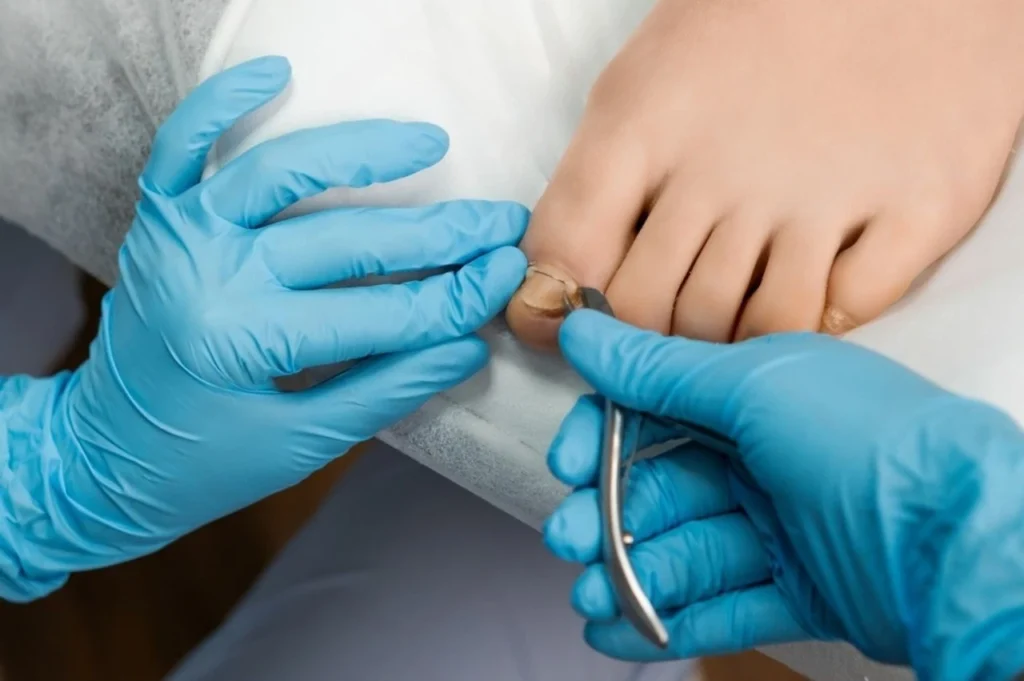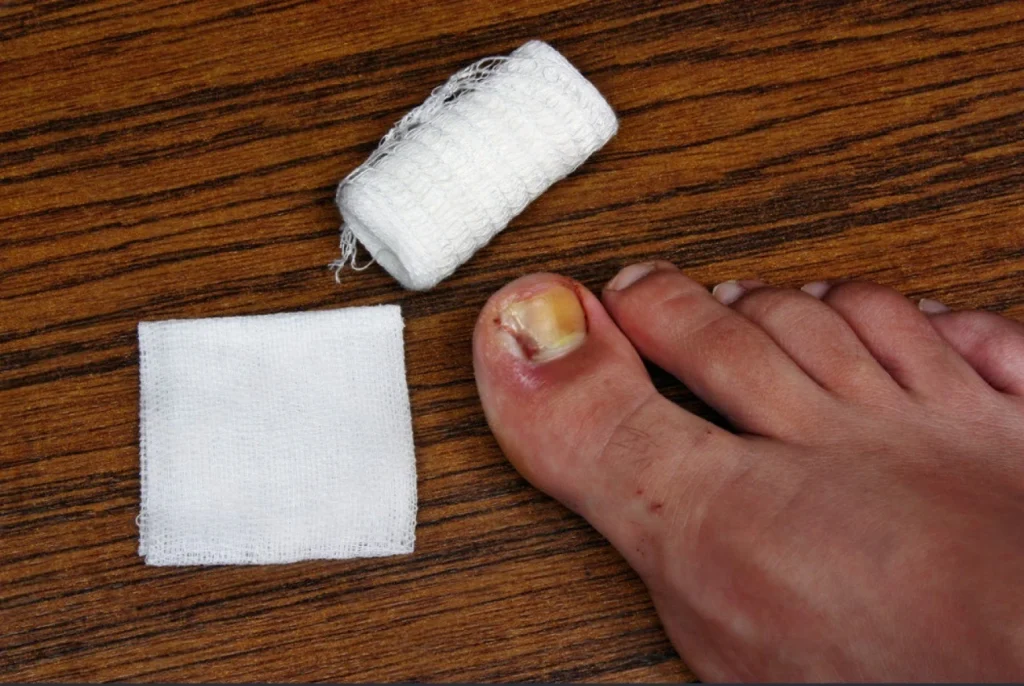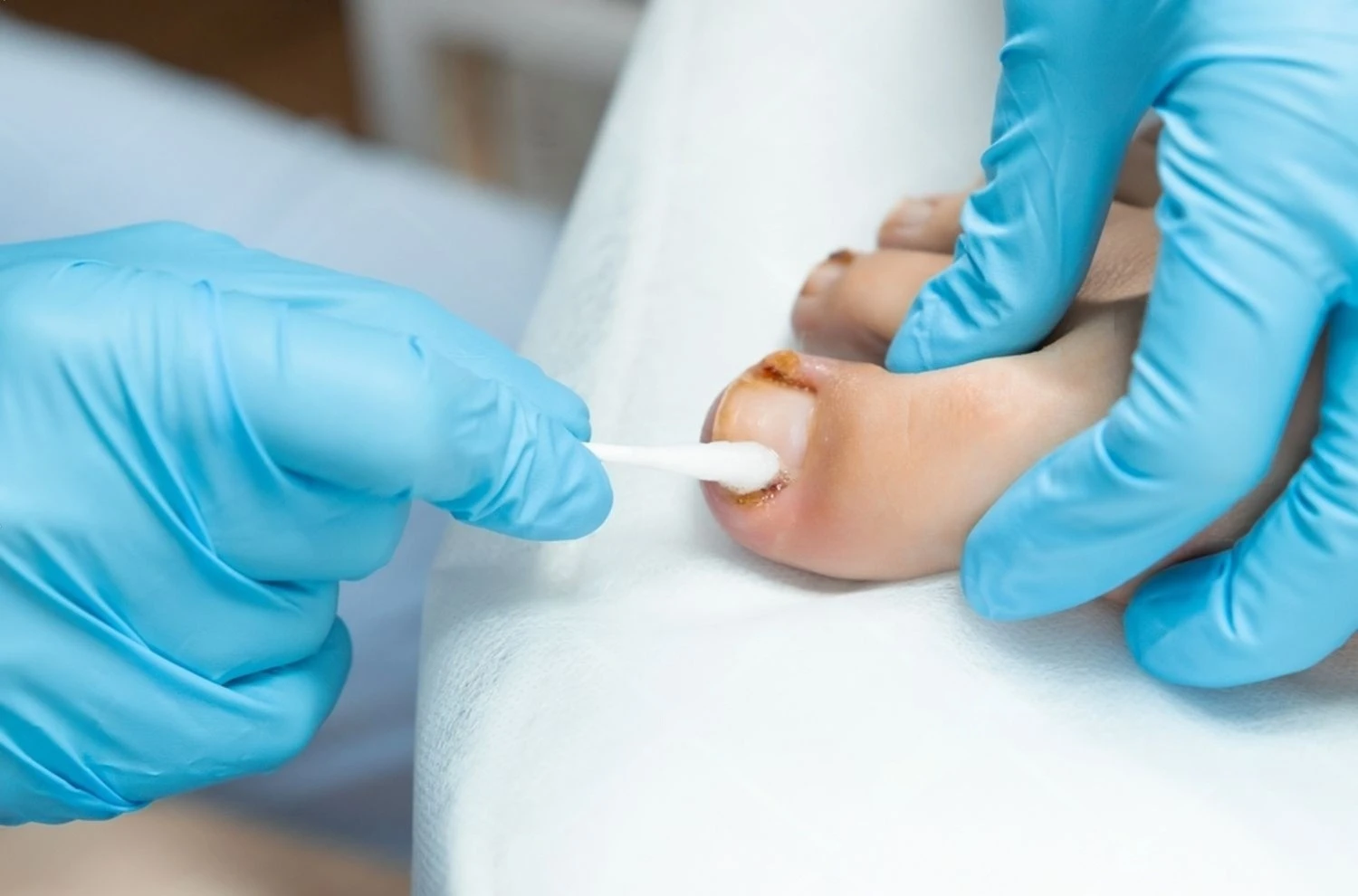An ingrown toenail happens when the edge of your toenail grows into the surrounding skin, causing pain, redness, and swelling. The good news? Most cases can be treated easily at home or by visiting a specialist. If you’re in Wichita, Kansas, the expert podiatrists at Foot & Ankle Surgeons of Kansas offer effective ingrown toenail treatment to help you find fast, lasting relief.
Mild ingrown toenails can often be treated at home by soaking your foot, keeping the area clean, and wearing comfortable shoes. For severe or infected toenails, professional care — such as partial or full toenail removal — may be necessary.
What Causes an Ingrown Toenail?
Common causes include trimming nails too short, wearing tight shoes, toe injuries, or naturally curved nails. When the nail grows into the skin, it creates pressure that can lead to infection if untreated.
Tip: Always trim your nails straight across and avoid rounding the corners — this simple habit can prevent future ingrown toenails.
At-Home Remedies for Mild Ingrown Toenails
If your toenail isn’t infected, try these steps for quick relief:
- Soak your feet in warm, soapy water for 15–20 minutes daily.
- Gently lift the nail edge with clean cotton or dental floss to guide growth.
- Apply antibiotic ointment and cover with a light bandage.
- Avoid tight shoes — opt for open or wide-toe footwear.
Most mild cases heal within a few days to weeks when treated properly.
Professional Ingrown Toenail Treatment in Wichita, KS


If pain, swelling, or discharge persists, it’s time for expert care. At Foot & Ankle Surgeons of Wichita, Kansas. Our podiatrists provide safe and effective treatment options, including:
- Partial Nail Removal: Removes only the ingrown section of the nail to relieve pain and pressure.
- Full Toenail Removal: Recommended for recurring or infected cases.
- Antibiotic Care: Prevents infection and promotes healing after treatment.
These procedures are quick, done under local anesthesia, and help restore your comfort almost immediately.
How to Prevent Ingrown Toenails
Preventing ingrown toenails is easier than you think. Here’s how:
- Trim nails straight across, not curved.
- Keep feet clean and dry.
- Avoid tight-fitting shoes and high heels.
Visit a podiatrist regularly if you have diabetes or recurring toenail issues.
When to See a Doctor


See a specialist immediately if you notice:
- Severe or throbbing pain
- Pus or drainage
- Redness spreading around the toe
Delaying treatment can worsen the infection and may lead to more serious complications.
Whether it’s mild irritation or severe pain, an ingrown toenail should never be ignored. While home care can help with early symptoms, professional treatment ensures long-term comfort and prevents recurrence.
An ingrown toenail can often be treated at home with warm soaks, antibiotic ointment, and proper nail care. Severe cases require medical attention for partial or full toenail removal. For professional ingrown toenail treatment in Wichita, Kansas, visit Foot & Ankle Surgeons of Kansas — experts in providing safe, effective relief for toenail pain and infection.




